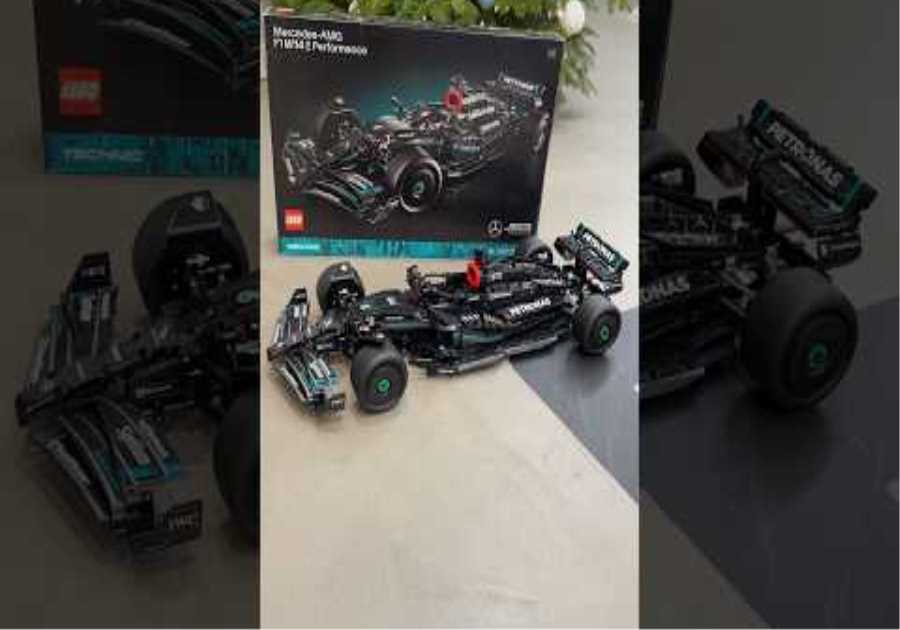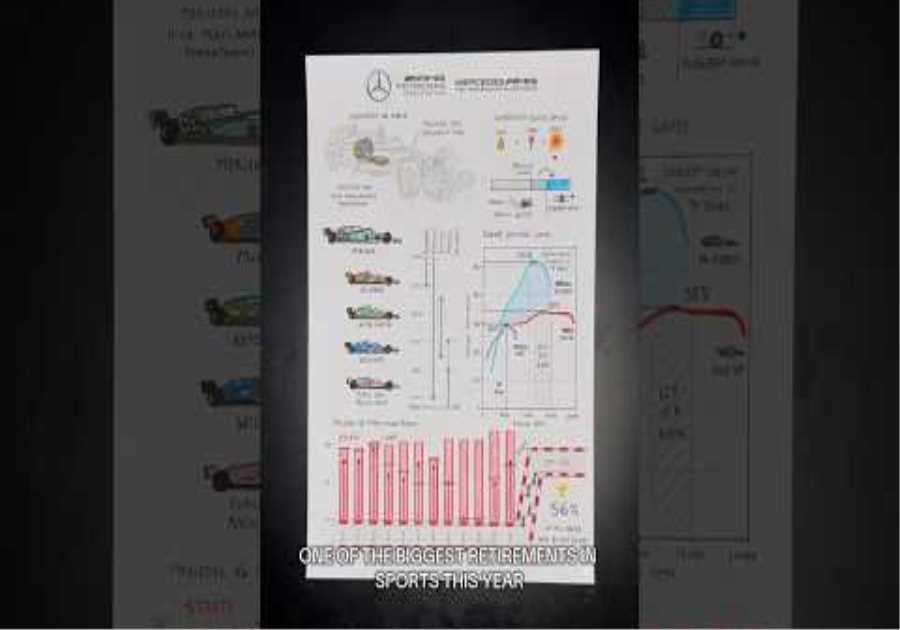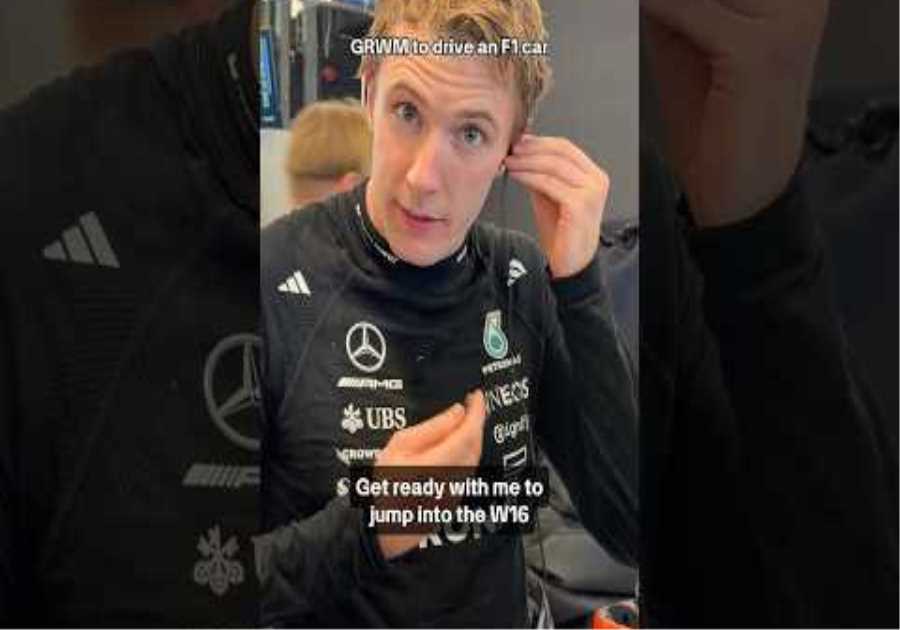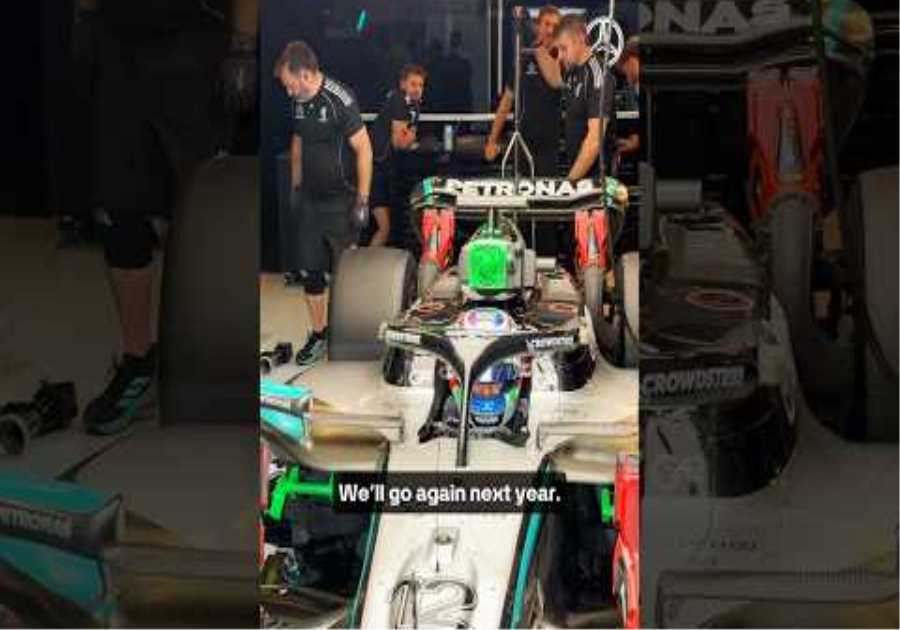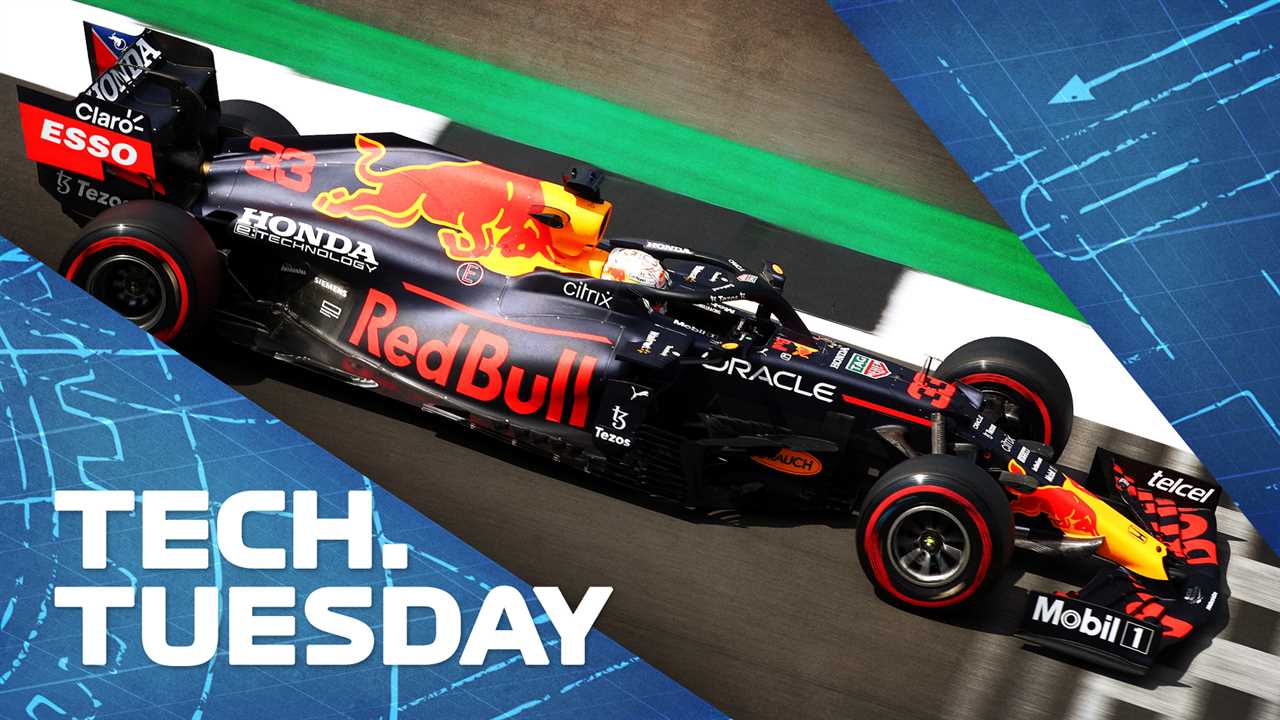
Mark Hughes explains why, despite Lewis Hamilton’s British Grand Prix win, Red Bull is sending the fastest car to Hungary for Mercedes – with technical illustrations by Giorgio Piola.
What was generally lost in the controversy sparked by the collision between Max Verstappen and Lewis Hamilton at the British Grand Prix is that Red Bull can now make real claims of having the fastest car at any type of circuit. Although Hamilton won after Verstappen crashed, the previous day’s sprint – won comfortably by Verstappen – showed the true comparison.
HIGHLIGHTS: All the action from the very first F1 Sprint
The high-speed sweeps of Silverstone presented a strong Mercedes opportunity to counter Red Bull as it is a track where aero efficiency rather than raw downforce is the most valuable trait given many of the key corners such as Abbey, Copse and Maggots are now comfortably flat for all cars in qualifying.
With these corners no longer testing the cars’ downforce limits, straight-line speed becomes more important than usual. As such, Mercedes trimmed their car with a fairly flat version of their Baku wing and was quickest at the end of the straight, as confirmed by the trap on the Hangar Straight just before Stowe.
The Gurney flap on Verstappen’s car only covered the middle part of his rear wing…
But Red Bull went the other way. Although they also opted for their Baku type rear wing, which is a higher downforce wing than the Mercedes, with a much improved and more draggy underside.
In addition, additional Gurney flaps were added to the trailing edges of the wing – across the full width of Sergio Perez’s car and only across the central portion of Verstappen’s car (comparison above). These have improved downforce but some drag.
TECH TUESDAY: The latest major upgrade from Mercedes for 2021 that helped Hamilton win at Silverstone
As a result of these decisions, the straight-line performance comparison between the two cars was Austria’s polar opposite. In qualifying at Silverstone, Verstappen’s Red Bull was the slowest of all through the speed trap, 10mph slower than Hamilton’s Mercedes. Nevertheless, the Red Bull was generally faster over the lap. Its downforce advantage allowed it to enter the straights faster.
The time it takes to get from the start to the end of the straight is the key issue and at Silverstone there was very little difference between the two cars in this measurement despite the large difference in top speed.
The car performance graph shows Mercedes’ gap to Red Bull on the Austria straights (top) and their advantage over Red Bull on the Silverstone straights (bottom)
The different approaches of the two teams selected for Austria and Silverstone reflect the very different aerodynamic maps of the two cars. For the Silverstone layout, Mercedes couldn’t afford to add downforce as it would have made them slower over the lap. The Red Bull was able to generate so much extra downforce through the slow and mid-speed corners that it got onto the straights fast enough not to lose on the straights everything it had gained in the corners.
Since their numerous upgrades at the two Austrian races, the Red Bull’s performance in slow corners is particularly strong. There was another bottom development on Verstappen’s car for Silverstone.
READ MORE: The two key upgrades that helped Verstappen edge past Mercedes even further at the Austrian GP
Small three-surface deflectors appeared on the edge of the bottom, placed transversely in front of the rear wheel. This is an unconventional feature not previously seen on other cars and follows from the introduction of the new ‘shark tooth’ diffuser at the previous race which was concerned with increasing the ride height at which the diffuser remained effective.
It’s likely that this latest bottom tweak is related, as the aero team will quickly have re-tweaked things around the gains found by the diffuser.
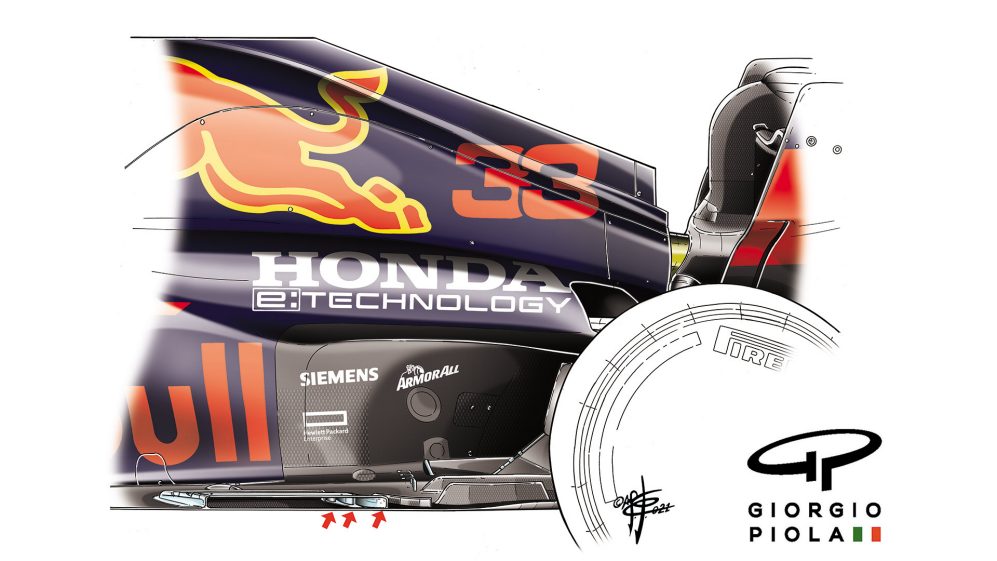
Giorgio Piola’s illustration shows three-plane deflectors on the bottom edge of the RB16B at Silverstone
There are three different mini-wing profiles, but their orientation at 90 degrees to the car’s travel suggests it’s less about adding direct downforce from the winglets themselves and more about managing pressure at the edge of the car to manipulate the sub-floor.
Since slats and slots in the bottom edge were banned in 2021, teams have been looking at other ways to maintain the vortices that run along the edge of the sub-bottom and effectively seal the bottom, allowing the central portion of it to be subjected to more negative pressure and thereby more into the track to be pulled.
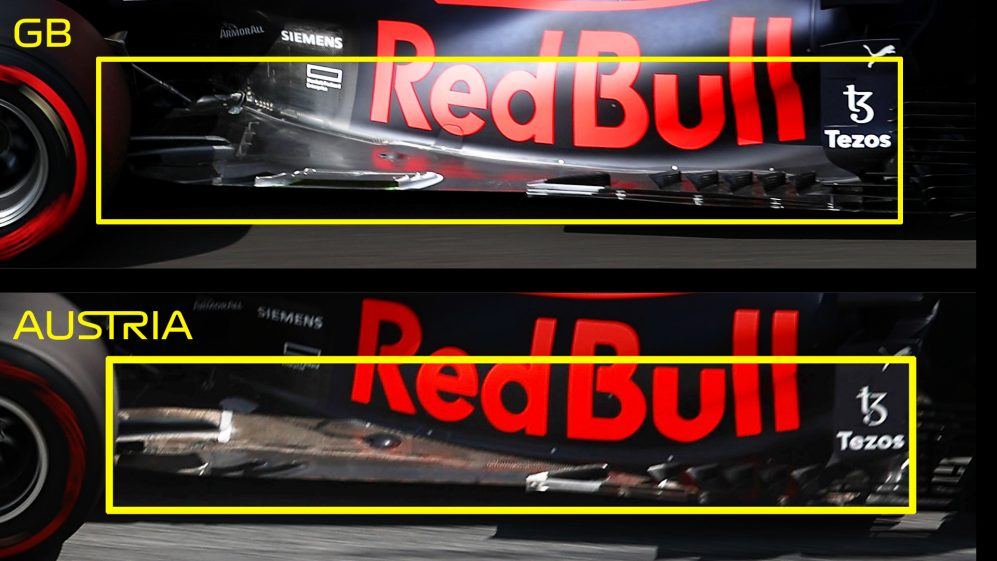
Comparison of Red Bull’s floors in the UK (above) and Austria (below) with the new design they brought to Silverstone
With the greater degree of bank allowed by the airflow around the new diffuser, it may have been that the ground edge vortices at that rear part of the floor struggled to stay active in the upper range of that ride height when the car is going at its slowest. These winglets could be the solution to that.
For the Hungaroring, the challenge is all about how much downforce can be loaded onto the car and less about the trade-off between downforce and speed on the straight. That’s a lot of Red Bull territory. Mercedes will be concerned as the Red Bull was still quicker even at Silverstone, where there were some compromises to be made.
READ MORE: Ferrari crashes the party and the aftermath of Silverstone – 5 intriguing storylines ahead of the Hungarian GP

